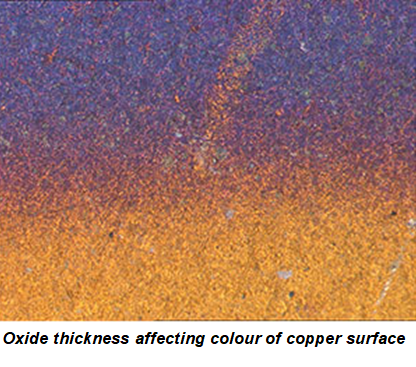High Temperature Oxidation
High temperature oxidation of metals and materials occurs when the temp erature is sufficient to allow interdiffusion of metal and oxygen. It can be deliberate:
erature is sufficient to allow interdiffusion of metal and oxygen. It can be deliberate:
- Furnace produced coloured metal for controlled heat transfer characteristics (emissivity).
- Growing a certain layer thicknesses of silicon oxide insulation or silicon oxynitride as a dielectric on semiconductor wafers.
- Furnace oxidation method of cleaning organic contaminants off metals prior to thermal reduction.
- FTIR oxide thickness measurements
In other cases oxidation is to be avoided or only permitted until a protective oxide is produced. Areas of interest may be:
- Inside a power generation gas tubine or aircraft jet engine.
- Automotive engine components.
- Air leaks in a reducing or other gas furnace process such as hardening or annealing.
- Welding under a protective inert gas shield and high temperature.
Surface oxidation can be evaluated by a combination of surface analysis techniques like XPS and SEM/EDX. The laboratory also has facilities to mimic thermal processes under a range of reducing and oxidising gas environments and measure oxidation and degradation temperatures by TGA.

